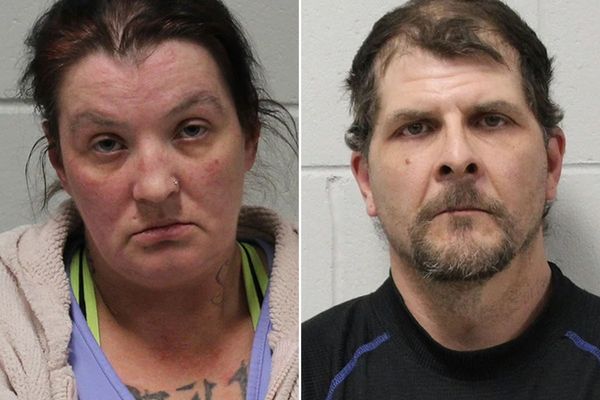
A woman who died at home during Hurricane Katrina in a community outside New Orleans, but who remained unidentified for nearly two decades, has finally been named before the storm’s 20th anniversary on Friday.
The woman, who was identified with the help of New Orleans’s CBS affiliate, WWL Louisiana, has been named as Dorothy Virginia Driggers Taquino, 81.
The news has given her family the opportunity to move her from an unmarked grave at a memorial in New Orleans for unidentified Katrina victims to a burial plot that she had selected in nearby St Bernard parish, where “she imagined spending eternity”, according to an article from the outlet – a local Guardian reporting partner – that was published on Wednesday.
“All I can say is that she’s finally going to be where she belongs,” niece Jean Driggers told WWL evening news anchor Devin Bartolotta.
Driggers recalled how she and other relatives had been unable to reach her “Aunt Dot” – who was widowed and lived in the New Orleans-area suburb of Arabi, which was ultimately devastated by the storm – when they decided to evacuate shortly before Katrina’s arrival on 29 August 2005.
“I was torn. It really did hurt me, but I just didn’t know what to do at the time,” Driggers said to WWL of Taquino, whose closest living blood relatives at the time were her niece and a nephew.
Taquino was found dead in her inundated home on 12 September 2005, according to WWL. Her body was moved along with hundreds of others to a temporary morgue erected in St Gabriel, Louisiana, about 65 miles (105km) west of New Orleans, the site of catastrophic federal levee failures during Katrina and where many of the roughly 1,400 people who died as a result of the storm had lived.
Yet, as WWL recounted, investigators struggled to confirm her identity in the chaotic aftermath of the hurricane. Driggers provided a genetic sample to investigators to aid their efforts to locate Taquino, but they reportedly said it was not enough to positively confirm an identification.
Taquino’s remains were entombed alongside 83 other unidentified storm victims at the Hurricane Katrina memorial near New Orleans City Park.
Taquino was one of 30 people who had still not been identified as of the start of the summer, when WWL Louisiana said it began investigating the status of unidentified storm victims.
Using information from sources such as the National Missing and Unidentified Persons System, along with a file of more than 800 autopsies completed by federal mortuary teams in the temporary morgue in St Gabriel, the outlet took notice of one case involving a woman found dead after the storm in Arabi while wearing a necklace engraved with the words “Joseph Kohn high school”.
Her case was the only one of the few with detailed information that originated from outside New Orleans’s city limits.
The outlet reached out to Ray Theriot, the coroner whose jurisdiction includes Arabi, and he gave the case a fresh look.
Theriot relied on utility bills, driver’s license files and property records to substantiate that a woman matching Taquino’s description had lived at the Arabi address where a body had been found. He then matched Taquino’s high school diploma to the inscription on the Joseph Kohn necklace.
“We’ve got the right person. There’s no doubt,” Theriot told Bartolotta of WWL, bringing down to 29 the number of unidentified victims remaining at the memorial.
The process of moving Taquino from the memorial in New Orleans to her chosen burial plot remained incomplete as Katrina’s 20th anniversary neared. WWL reported that the relocation was evidently being slowed by a need to locate records among numerous file boxes, which had been shuffled during multiple New Orleans coroner’s office moves in the years since Katrina.
Driggers nonetheless said she took comfort in Taquino’s identification, which she learned about when Theriot visited her house.
She recalled thinking to herself “if you love something, you have to let it go” after being disappointed that the earlier genetic sample had not been enough to help track down Taquino.
“Well … it came knocking at my door,” Driggers said. “So it was meant to be.”







